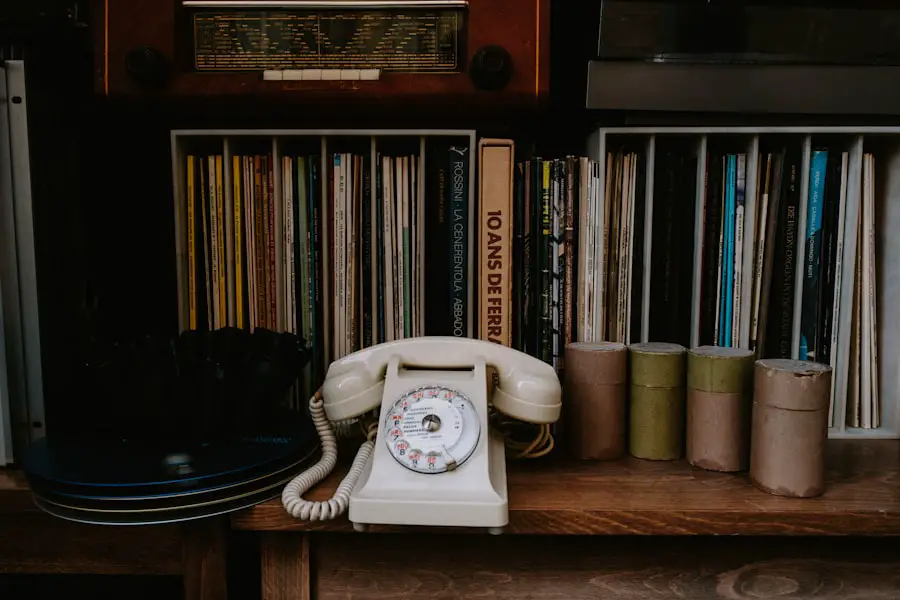Call blocking is a feature that has gained significant traction in recent years, primarily due to the increasing prevalence of spam calls and unwanted telemarketing. This functionality allows users to prevent specific numbers from reaching their devices, thereby enhancing their overall phone experience. The rise of robocalls and unsolicited marketing has made call blocking not just a convenience but a necessity for many.
By utilizing this feature, users can reclaim their time and reduce the stress associated with constant interruptions from unwanted callers. The mechanics of call blocking are relatively straightforward. When a number is blocked, any incoming calls from that number are automatically redirected to voicemail or simply rejected, depending on the device settings.
This means that the user will not receive any notifications for these calls, allowing them to maintain their focus on more important communications. However, it is essential to understand that while call blocking can significantly reduce the number of unwanted calls, it is not foolproof. New numbers can be generated by spammers, and legitimate callers may inadvertently get blocked if their number is mistakenly added to the block list.
Key Takeaways
- Call blocking is a feature that allows users to prevent specific phone numbers from reaching their device.
- On iPhone, call blocking works by using the built-in Phone app to block numbers, and also by utilizing third-party apps for additional features.
- Carrier settings play a role in call blocking by allowing users to block specific types of calls, such as international or unknown numbers.
- Voicemail settings can be adjusted to handle blocked calls differently, such as sending them directly to voicemail or blocking them entirely.
- Potential workarounds for blocked calls include using a different phone number or contacting the carrier for assistance.
How Call Blocking Works on iPhone
On an iPhone, call blocking is integrated into the operating system, making it user-friendly and accessible. Users can block numbers directly from their call history or contact list. When a number is blocked, the iPhone will not ring when that number calls; instead, the call will go directly to voicemail.
This seamless integration allows users to manage their communications effectively without needing third-party applications or complex settings. To block a number on an iPhone, users can navigate to the Phone app, select the “Recents” tab, and find the number they wish to block. By tapping the “i” icon next to the number, they can scroll down and select “Block this Caller.” This action adds the number to a block list that can be managed in the Settings app under Phone > Blocked Contacts.
Additionally, users can also block numbers from text messages and FaceTime calls, providing a comprehensive approach to managing unwanted communications across different channels.
The Role of Carrier Settings

Carrier settings play a crucial role in how call blocking functions on an iPhone. These settings are provided by the mobile carrier and can influence various aspects of phone functionality, including call management features. Different carriers may have unique policies regarding call blocking, which can affect how effectively users can manage unwanted calls.
For instance, some carriers offer additional services that enhance call blocking capabilities, such as identifying spam calls before they reach the user. Moreover, carrier settings are updated periodically to improve performance and introduce new features. Users may receive notifications prompting them to update their carrier settings, which can enhance their call blocking experience.
It is essential for users to keep these settings up to date to ensure they benefit from the latest advancements in call management technology. In some cases, carriers may also provide apps that offer advanced call blocking features, allowing users to customize their experience further.
Voicemail Settings and Call Blocking
| Category | Metrics |
|---|---|
| Voicemail Settings | Number of voicemails |
| Voicemail Settings | Voicemail storage usage |
| Call Blocking | Number of blocked calls |
| Call Blocking | Blocked numbers list |
Voicemail settings are intricately linked to call blocking on an iPhone. When a blocked number attempts to call, the call is typically routed directly to voicemail without ringing the user’s phone. This means that while users will not be disturbed by unwanted calls, they may still receive voicemails from these blocked numbers.
Depending on individual preferences, this can be either a nuisance or a non-issue. Users can manage their voicemail settings to determine how they want to handle messages from blocked callers. For instance, some may choose to ignore these voicemails altogether, while others might want to review them occasionally to ensure that no important messages are missed.
The voicemail system on an iPhone allows users to listen to messages at their convenience, providing flexibility in how they manage communications from both known and unknown sources.
Potential Workarounds for Blocked Calls
Despite the effectiveness of call blocking features on an iPhone, there may be instances where users find themselves missing important calls due to mistakenly blocked numbers or other issues. In such cases, potential workarounds can help mitigate these challenges. One common approach is to create a contact for important numbers that might be mistakenly identified as spam.
By saving these numbers in the contact list, users can ensure that they are not inadvertently blocked. Another workaround involves using third-party applications designed for enhanced call management. These apps often provide additional features such as spam identification and advanced filtering options that go beyond the built-in capabilities of the iPhone.
While these applications can be beneficial, users should exercise caution and choose reputable options to protect their privacy and data security.
Impact of iOS Updates on Call Blocking

iOS updates frequently introduce new features and enhancements that can impact how call blocking works on an iPhone. Apple continuously refines its operating system based on user feedback and technological advancements, which means that users may notice changes in how blocked calls are handled after an update. For example, newer versions of iOS may include improved spam detection algorithms or additional options for managing blocked contacts.
It is essential for users to stay informed about these updates and understand how they may affect their call blocking settings. After updating their device, users should review their call blocking preferences to ensure everything is functioning as expected. In some cases, updates may reset certain settings or introduce new features that require user configuration for optimal performance.
Troubleshooting Blocked Calls Going to Voicemail
While call blocking is designed to prevent unwanted calls from reaching users, there are instances where blocked calls may still appear in voicemail. This situation can be frustrating for users who rely on the feature for peace of mind. Troubleshooting this issue often involves checking both the block list and voicemail settings to ensure everything is configured correctly.
One common reason for this issue is that users may have inadvertently unblocked a number or failed to save changes after modifying their block list. It is advisable for users to periodically review their blocked contacts and ensure that any unwanted numbers are still included in the list. Additionally, checking voicemail settings can help determine if there are any specific configurations that allow blocked callers to leave messages despite being blocked.
Best Practices for Managing Blocked Calls on iPhone
To effectively manage blocked calls on an iPhone, users should adopt several best practices that enhance their overall experience with this feature. First and foremost, regularly reviewing the block list is essential. As new spam numbers emerge frequently, keeping the block list updated ensures that unwanted calls are minimized.
Another best practice involves utilizing the “Silence Unknown Callers” feature available in recent iOS versions. This feature automatically sends calls from unknown numbers directly to voicemail while allowing calls from known contacts through. This approach can significantly reduce interruptions from spam calls while ensuring that legitimate callers are not affected.
Furthermore, educating oneself about potential scams and common spam tactics can empower users to make informed decisions about which numbers to block. By staying vigilant and proactive in managing communications, users can create a more pleasant phone experience while minimizing disruptions from unwanted callers. In conclusion, understanding and effectively managing call blocking on an iPhone involves a combination of utilizing built-in features, staying informed about updates and carrier settings, and adopting best practices for communication management.
By taking these steps, users can significantly enhance their phone experience and reduce the stress associated with unwanted calls.
If you are wondering whether blocked calls go straight to voicemail on iPhone, you may want to check out the article on iPhone Info’s terms and conditions. This article may provide more information on how the blocking feature works on iPhones and whether blocked calls are automatically sent to voicemail. It is always important to understand the terms and conditions of using such features on your device.
FAQs
What happens when a call is blocked on an iPhone?
When a call is blocked on an iPhone, the caller will not be able to reach the user. The call will not ring on the user’s phone and will not show up in the recent calls list.
Do blocked calls go straight to voicemail on iPhone?
Yes, when a call is blocked on an iPhone, it will go straight to voicemail. The caller will not be notified that their call has been blocked and will be directed to leave a voicemail if they choose to.
Can I see blocked calls in my voicemail on iPhone?
Yes, blocked calls that go to voicemail will be stored in the voicemail section of the iPhone. The user can access these voicemails and choose to listen to or delete them.
Can I unblock a number that has been blocked on my iPhone?
Yes, users can unblock a number that has been previously blocked on their iPhone. This can be done through the settings or phone app, depending on the iOS version.
Will a blocked caller know they have been blocked on iPhone?
No, a blocked caller will not receive any notification that they have been blocked on an iPhone. The call will simply go straight to voicemail without ringing on the user’s phone.










